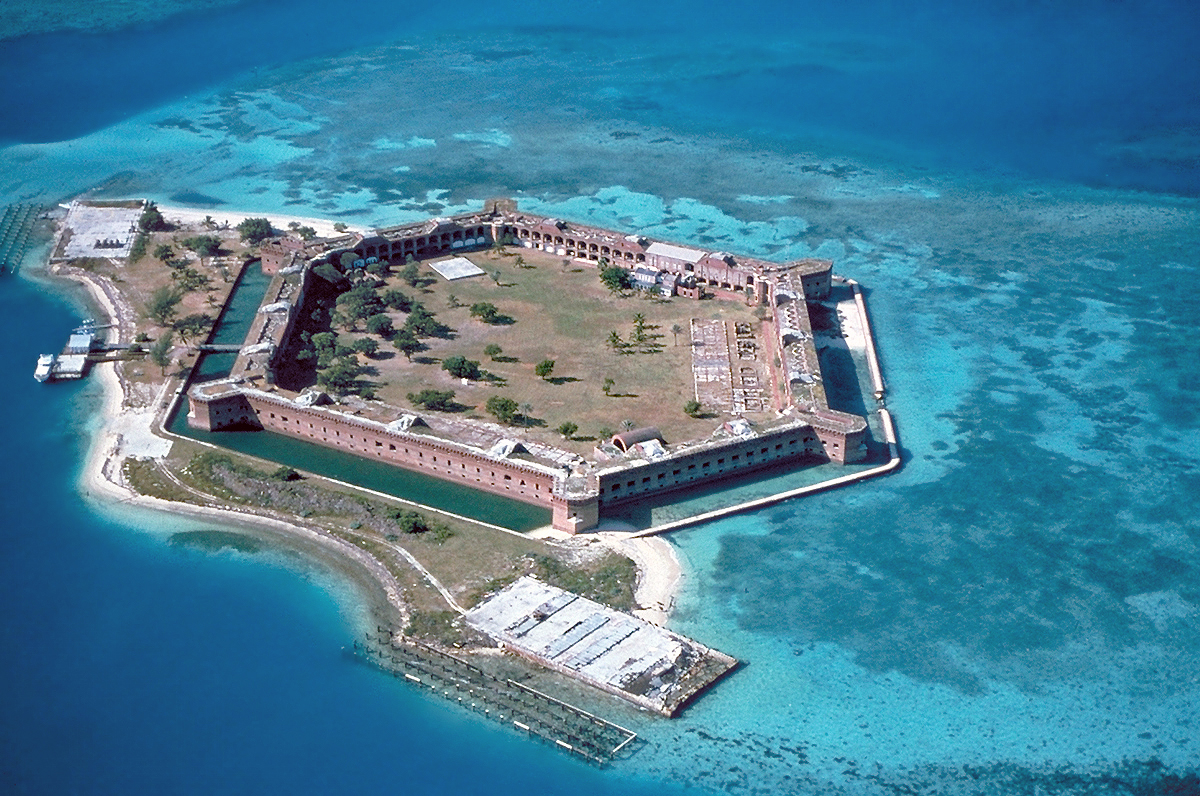THE BEST WAY TO SPEND A SINGLE DAY IN DRY TORTUGAS NATIONAL PARK
Dry Tortugas National Park is one of the most remote parks in the United States, and our seaplane touched down with a splash.
Key West Seaplane Charters took off from Key West and the trip lasted 35 minutes without incident. Not to mention, the scenery was breathtaking.
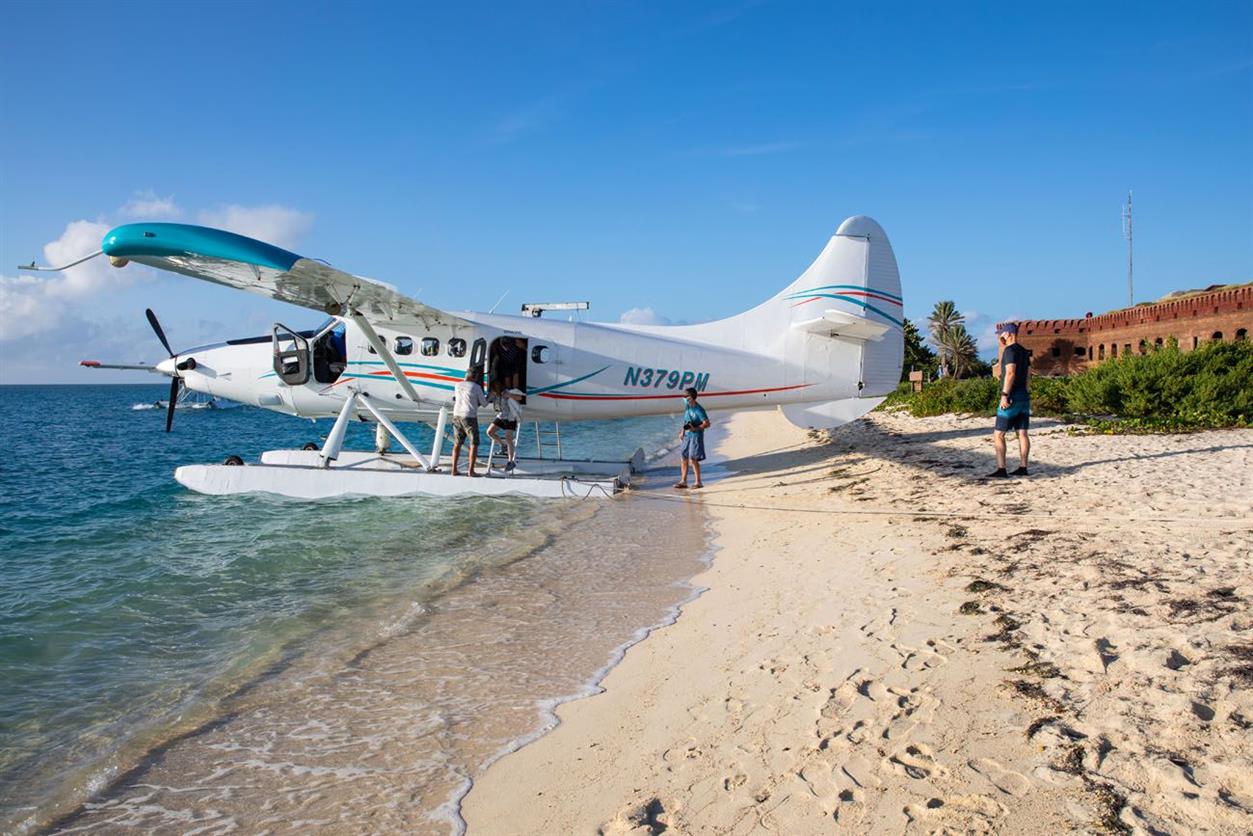
THE SEAPLANE ADVENTURE DAY TRIP TO DRY TORTUGAS
For my day trip to Dry Tortugas, taking a seaplane seemed an obvious choice. A ferry ride, which can take more than two hours, is the only alternative option.
I was eager to reach the island without delay so that I could enjoy it without being bothered by other visitors. I had heard that flying over a landscape in a seaplane gave you a viewpoint you couldn’t get any other way.
After taking off from Key West, we flew over a region known as the “Flats,” a shallow body of water stretching for about twenty miles and teeming with marine life. From above, we could see sharks and sting rays swimming below.
When viewed from above, they were merely black smudges. Without Marcus, our pilot, I doubt I would have been able to recognize them. It was thrilling, though.
The Key West panorama. Debbie Stone’s Photographs
Many of the mangrove islands were uninhabited, with the exception of Ballast Key. The island, which was once privately owned by Key West, Florida celebrity David Wolkowsky, is now administered by the United States government. Inland Fish and Wildlife Service.
From a seaplane or the ferry, just the main house can be seen; the guest house and the workshop are hidden from view.
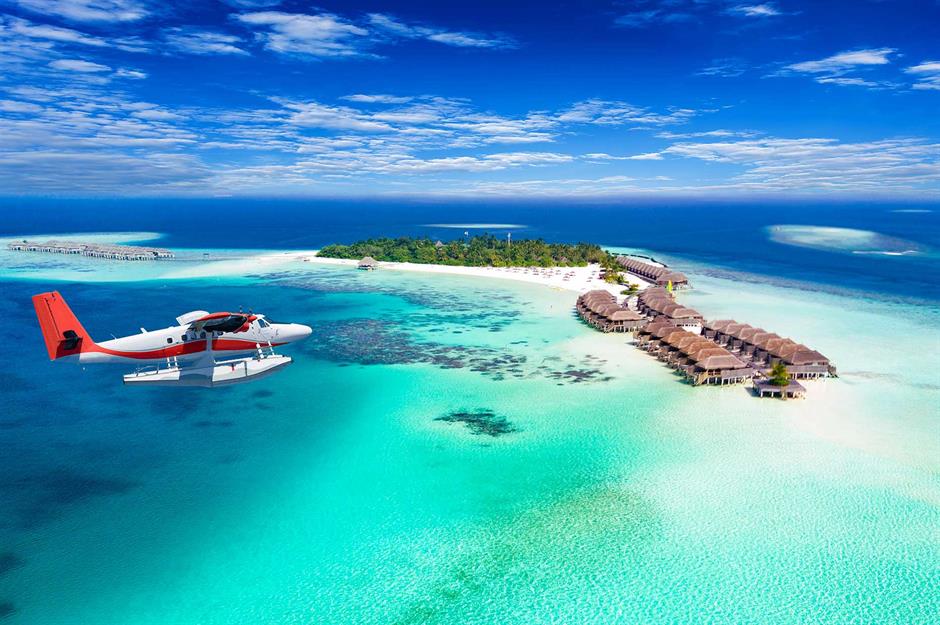
SEA TURTLES AND SHIPWRECKS AHEAD
Fort Jefferson appeared in the distance as we neared Garden Key. Dry Tortugas National Park consists of seven islands, one of which being Garden Key. Ponce de Leon named these islands Las Tortugas, “The Turtles,” after the numerous marine reptiles he found there in 1513. The term “dry” was added so that sailors would know there was no longer any fresh water available.
Fort Jefferson, the park’s most important landmark, was first constructed in 1846. The United States had an interest in regulating shipping in the Gulf of Mexico and safeguarding commerce along the Mississippi River. This is why we need to build defenses. Over thirty years were spent building the fort, but it was never completed.
During the Civil War, the unfinished fort was used as a prison for captured deserters. It also housed the four men found guilty of aiding in the assassination of President Abraham Lincoln, most notably Dr. Samuel Mudd, the physician who attended to John Wilkes Booth after he shot Lincoln.
By the end of the war, the garrison’s population had grown to around 2,000. There was never enough to eat, and clean water was always scarce.
Soldier morale was low because of the oppressive heat and weight of their clothing. Scurvy, in particular, was rampant. The area’s moat also served as an unregulated drain.
In 1874, the military pulled out of Fort Jefferson. After some time, it was designated as a wildlife reserve to shield breeding birds from egg hunters.
After that, in 1935, it received the status of National Monument. However, Dry Tortugas did not become a National Park until 1992.
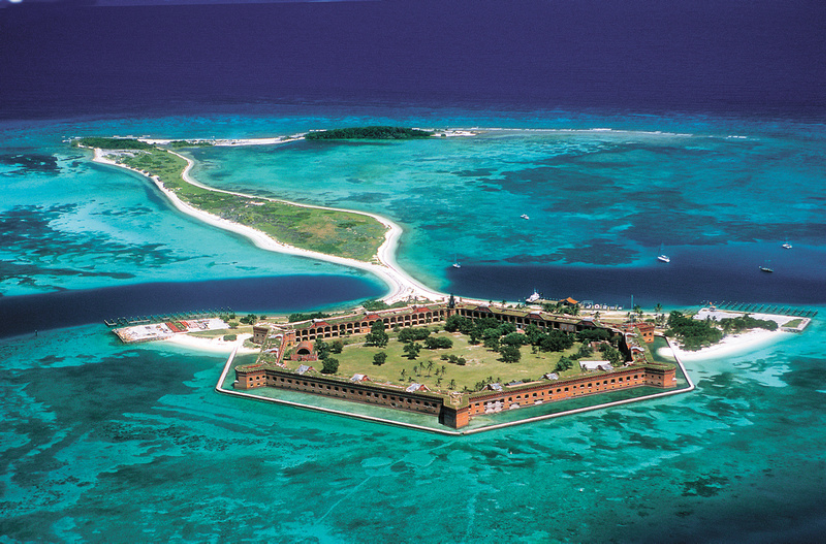
HISTORIC FORT JEFFERSON
Fort Jefferson appeared in the distance as we neared Garden Key. Dry Tortugas National Park consists of seven islands, one of which being Garden Key. Ponce de Leon named these islands Las Tortugas, “The Turtles,” after the numerous marine reptiles he found there in 1513. The term “dry” was added so that sailors would know there was no longer any fresh water available.
Fort Jefferson, the park’s most important landmark, was first constructed in 1846. The United States had an interest in regulating shipping in the Gulf of Mexico and safeguarding commerce along the Mississippi River. This is why we need to build defenses. Over thirty years were spent building the fort, but it was never completed.
During the Civil War, the unfinished fort was used as a prison for captured deserters. It also housed the four men found guilty of aiding in the assassination of President Abraham Lincoln, most notably Dr. Samuel Mudd, the physician who attended to John Wilkes Booth after he shot Lincoln.
By the end of the war, the garrison’s population had grown to around 2,000. There was never enough to eat, and clean water was always scarce.
Soldier morale was low because of the oppressive heat and weight of their clothing. Scurvy, in particular, was rampant. The area’s moat also served as an unregulated drain.
In 1874, the military pulled out of Fort Jefferson. After some time, it was designated as a wildlife reserve to shield breeding birds from egg hunters.
After that, in 1935, it received the status of National Monument. However, Dry Tortugas did not become a National Park until 1992.
EXPLORE THE FORT
The fort, located on eleven of the island’s sixteen total acres, is open to self-guided tours. It has changed little since it was built, so exploring it is like stepping back in time 150 years to a time when it was a remote outpost.
More than sixteen million bricks make up this gigantic fortress. That makes it the largest building made entirely of brick and mortar in the Americas. It’s decaying and in ruins in a number of spots. but you can also witness the ongoing preservation efforts and structural repairs.
Spiral staircases connect the fort’s many floors. In numerous locations around the fort, informative panels describe daily life for those stationed there and others who have been incarcerated there. They also include information about the weapons and ammo stored there.
The best views of the island can be had from the highest floor. Nearly 360-degree views can be had while strolling around four of the six sides. The route around the moat provides excellent vantage points of the fort and should not be missed.
The main swim beach at Dry Tortugas is the perfect spot for snorkelers to explore the island’s famous living coral reef. Coral reefs flourish in this area because the water is shallow, clean, and warm.
The reefs are teaming with marine life, including sea anemones, lobsters, sponges, and a rainbow of fish of all shapes and sizes. Sharks and barracudas are at the top of the food chain.
The islands also serve as nesting grounds for the critically endangered green sea turtle and the endangered loggerhead turtle. At most, a female can produce 100 eggs. She hides them and swims away, leaving the hatchlings to make their own way to the water. Many don’t make it because they get eaten by predators in the wild.
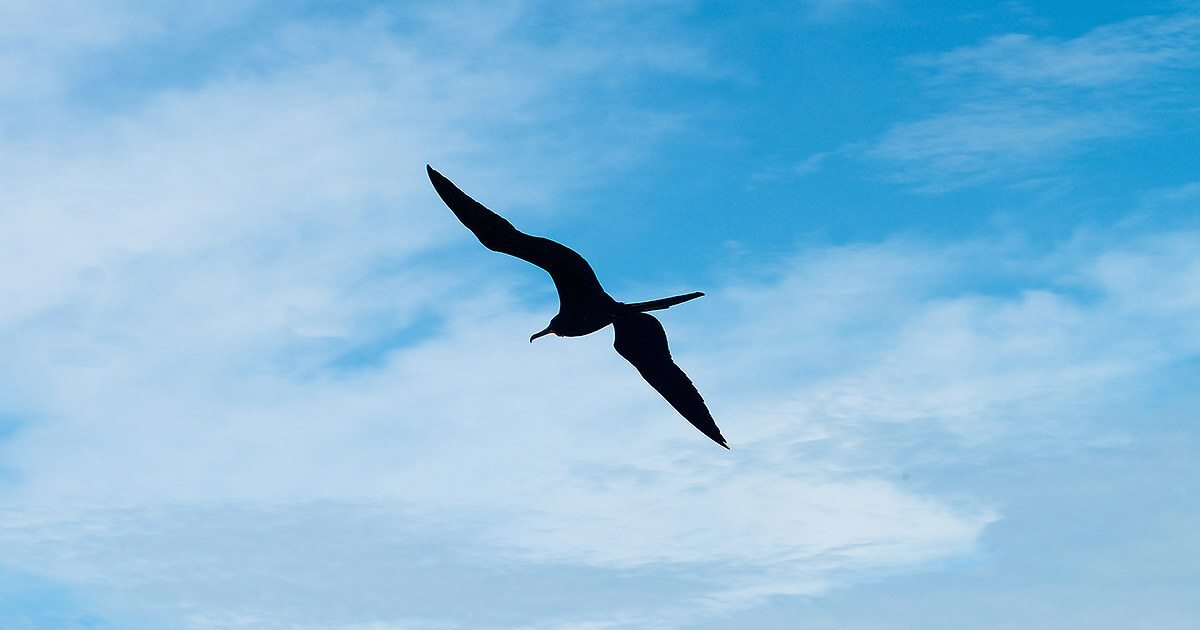
BIRDS ABOUND ON THE ISLAND
Birdwatchers will find paradise on a day trip to Dry Tortugas. This is due to the island’s prime location on the primary route between North and South America, where many species stop to refuel or rest.
Sooty Terns are the main attraction in the winter. During the breeding season, about a hundred thousand of these birds congregate here. Brown Noddies also inhabit this area. Although the rookery is off-limits to visitors at this time, it can be observed using binoculars.
The likes of frigates, pelicans, and cormorants can also be spotted regularly in the air. The seven-foot wingspans of the frigates in particular are really impressive. When they take flight, it’s a sight to behold.
You’ll need to bring all of your own supplies for a day excursion to Dry Tortugas because there are no restaurants or stores on the island. We have bathrooms, so that’s a plus. There are eleven campsites available, and if you want to stay the night, you’ll need to book one in advance.
You might assume that returning to Key West along the same flight path would be an unremarkable experience. Quite the opposite, in fact. The hues of the water are beyond description, and the landscape is just as breathtaking, but now you know what to look for. When you prepare your eyes, you can take in more of the scenery and enjoy it more fully. Soon enough you’ll be back on solid ground.

